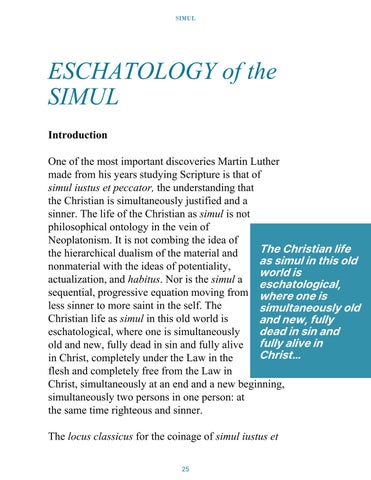SIMUL
ESCHATOLOGY of the SIMUL Introduction
One of the most important discoveries Martin Luther made from his years studying Scripture is that of simul iustus et peccator, the understanding that the Christian is simultaneously justified and a sinner. The life of the Christian as simul is not philosophical ontology in the vein of Neoplatonism. It is not combing the idea of The Christian life the hierarchical dualism of the material and as simul in this old nonmaterial with the ideas of potentiality, world is actualization, and habitus. Nor is the simul a eschatological, sequential, progressive equation moving from where one is less sinner to more saint in the self. The simultaneously old Christian life as simul in this old world is and new, fully eschatological, where one is simultaneously dead in sin and old and new, fully dead in sin and fully alive fully alive in Christ… in Christ, completely under the Law in the flesh and completely free from the Law in Christ, simultaneously at an end and a new beginning, simultaneously two persons in one person: at the same time righteous and sinner. The locus classicus for the coinage of simul iustus et 25




